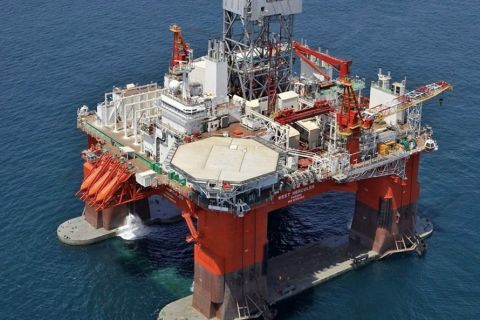U.S. natural gas futures jumped almost 6% on April 7 to their highest close since December 2008 on record global demand for American LNG exports.
Traders also noted prices gained on a bigger than expected storage draw, a preliminary decline in output and forecasts for more demand in the U.S. over the next two weeks then previously expected.
“All this talk of sending U.S. LNG to supply Europe and get them off Russian gas is causing U.S. gas to be repriced because of what lies ahead for LNG exports,” said John Kilduff, partner at Again Capital LLC in New York.
Even though the United States is already exporting all the LNG it can produce, Kilduff said, “the reality is U.S. gas is getting a lot of investor interest because it is a commodity that can be stored. So, buy now and avoid the rush.”
U.S. front-month gas futures rose 33.0 cents, or 5.5%, to settle at $6.359 per MMBtu, their highest close since December 2008.
Those gas futures have already soared about 71% this year with much higher prices in Europe keeping demand for U.S. LNG near record highs as several countries try to wean themselves off Russian gas after Moscow invaded Ukraine on Feb. 24, an action the Kremlin calls a “special military operation.”
Oddly enough, European gas and global crude futures dipped on April 7.
European gas slid about 3% to around $33 per MMBtu on mild weather and ample LNG imports. It’s not unusual for U.S. gas to rise when European gas is down since the two markets have moved in the opposite direction more than half the time so far this year.
Oil futures, meanwhile, eased on uncertainty about sanctions against Russia and coronavirus demand destruction in China.
Record U.S. LNG demand also boosted the 12-month gas futures strip to its highest since January 2009 and helped keep the U.S. front-month in technically overbought territory with a relative strength index (RSI) over 70 for a seventh day in a row.
Despite recent gains, the U.S. gas market remains mostly shielded from much higher global prices because the United States, as the world’s top gas producer, has all the fuel it needs for domestic use and capacity constraints limit its ability to export more LNG no matter how high global prices rise.
Data provider Refinitiv said the amount of gas flowing to U.S. LNG export plants slid from a record 12.9 Bcf/d in March to 12.4 Bcf/d so far in April due to declines at the Corpus Christi and Freeport facilities in Texas. The U.S. can turn about 13.2 Bcf/d of gas into LNG.
Since the U.S. will not be able to produce much more LNG anytime soon, the country has worked with allies to divert more LNG exports to Europe to help EU countries and others break their dependence on Russian gas.
Russia, the world's second biggest gas producer, provided about 30% to 40% of Europe’s gas in 2021, totaling about 18.3 Bcf/d. The EU wants to cut Russian gas imports by two-thirds by the end of 2022 and refill stockpiles to 80% of capacity by Nov. 1, 2022, and 90% by Nov. 1 each year beginning in 2023.
Gas stockpiles in Western Europe (Belgium, France, Germany and the Netherlands) were about 34% below the five-year (2017-2021) average for this time of year, according to Refinitiv. That is about 22% of full capacity and compares with inventories about 17% below the five-year normal in the U.S.
Recommended Reading
CNOOC Makes 100 MMton Oilfield Discovery in Bohai Sea
2024-03-18 - CNOOC said the Qinhuangdao 27-3 oilfield has been tested to produce approximately 742 bbl/d of oil from a single well.
CNOOC Finds Light Crude at Kaiping South Field
2024-03-07 - The deepwater Kaiping South Field in the South China Sea holds at least 100 MMtons of oil equivalent.
Orange Basin Serves Up More Light Oil
2024-03-15 - Galp’s Mopane-2X exploration well offshore Namibia found a significant column of hydrocarbons, and the operator is assessing commerciality of the discovery.
Sinopec Brings West Sichuan Gas Field Onstream
2024-03-14 - The 100 Bcm sour gas onshore field, West Sichuan Gas Field, is expected to produce 2 Bcm per year.
E&P Highlights: March 11, 2024
2024-03-11 - Here’s a roundup of the latest E&P headlines, including a new bid round offshore Bangladesh and new contract awards.





